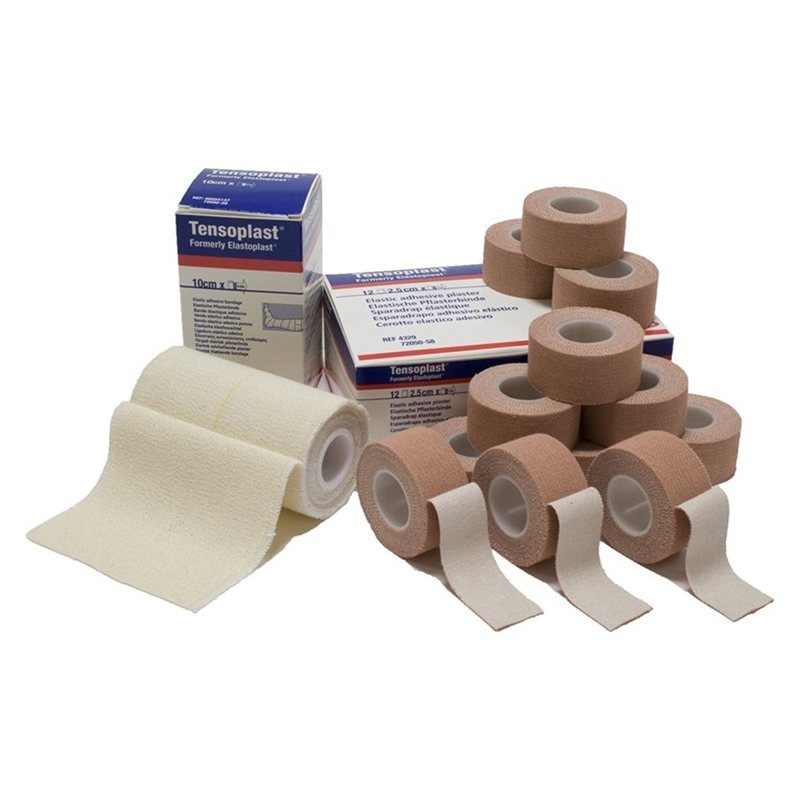
Guide to the best Elastic Adhesive Bandages (EABs)
What are Elastic Adhesive Bandages (EABs)?
Elastic Adhesive Bandages are known among physiotherapists as EAB’s and have been the mainstay in compression support bandages for many years. Early market leaders in the field were Elastoplast (now known as Tensoplast), and they would commonly have been seen in doctor’s treatment rooms, hospital wards and the first-aid shelves of community pharmacy.
What Elastic Adhesive Bandage (EAB) do I need?
Choosing the right tape for the job is dependent on a number of factors:
Nature of the taping technique
If the physiotherapist is taping a sprained ankle for example she may feel it important to use one of the branded tapes such as Tensoplast, formerly known as Elastoplast. This is the style of tape found in medical and hospital practice and may offer a degree of reassurance when performing a functional taping technique on an injured player. On the other hand, rugby players forming a taping wrap around their heads or footballers who tape their ankles regularly for support, tend to like some of the lighter tapes such as Vivo Sports Wrap and Leukoband Club.
Cost
Since EAB is one of the most commonly used strapping tapes in sport, for many clubs value for money is an important consideration. At Vivomed we offer all the well known branded EAB’s but also have a collection of low cost top quality alternatives. We match our own Vivoplast as an alternative to Tensoplast and our Vivo Sports Wrap sits well next to Leukoband Club. It is also important to buy these physio tapes in box quantities as it will further reduce the costs to the Club.
Physio’s preference
As is the case with all tapes, individual physiotherapists and players will favour specific sport tapes for no quantifiable reason. It has been the case for example, historically, that rugby players favour Vivomed‘s Vivolastic EAB which is a top quality medical tape manufactured in the UK while football players tend to use Leukoband Club from Global Healthcare company BSN (Essity).
How to use an Adhesive Bandage (EAB)
Use of the tape will vary according to the technique being used, but effectively the stretch of the elasticated tape is the characteristic that offers compression, so the physio will apply the tape to the injured tissue or joint using her preferred degree of stretch on the tape. The zinc oxide adhesive will hold the tape firmly in place and the resultant wrap will support the muscle or joint. Players with sensitive skin may choose to use underwrap to prevent potential allergies to the adhesives in the tape. In contrast to zinc oxide tape and cohesive bandages traditional style EAB’s require to be cut with scissors, so physios performing on field first-aid will often select a hand-tearable EAB such as Vivolight, Lightplast Pro or Mueller Tearlight for speed of application.



